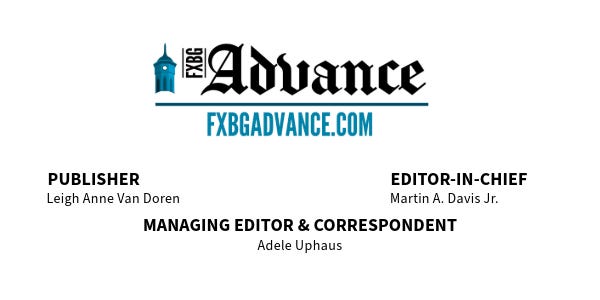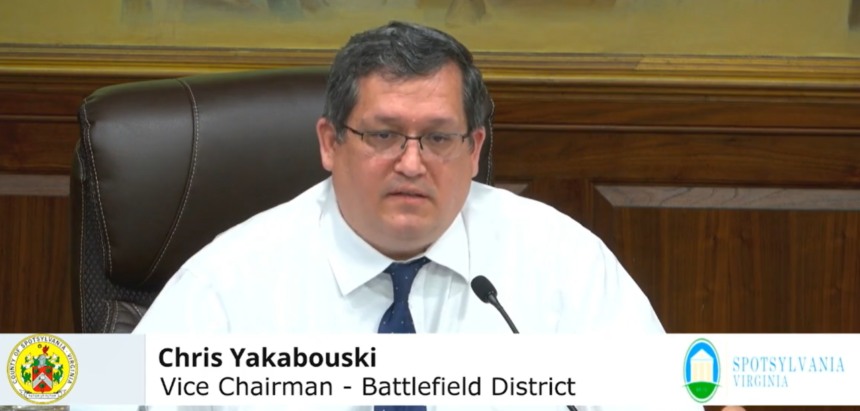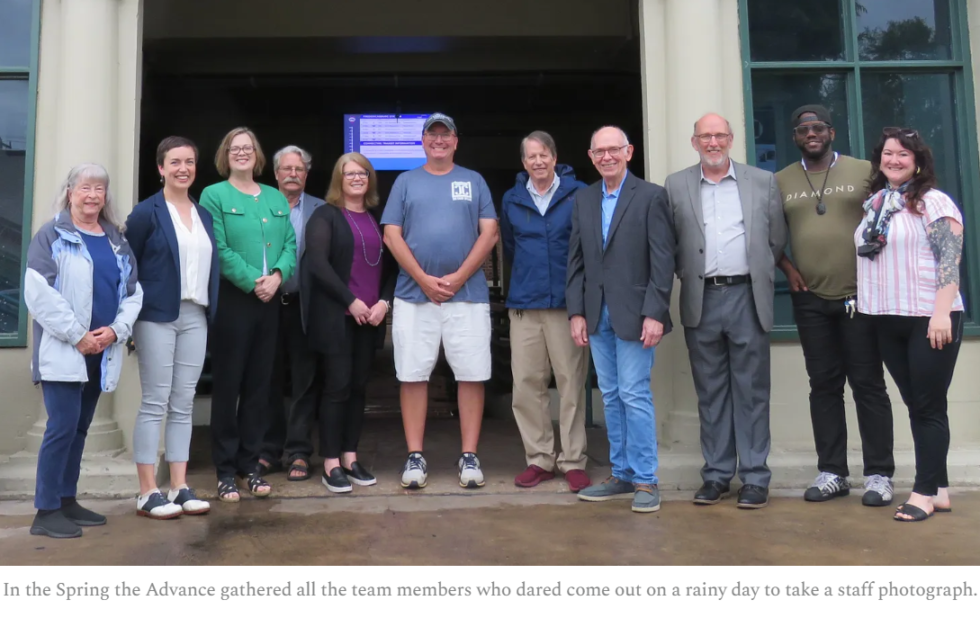
The Advance launched in November 2024 with two goals. To deliver exceptional journalism, and to restore journalism to a place of respect.
This past Thursday evening, the three media groups covering our region gathered at the University of Mary Washington to talk about the challenges of covering the news following the collapse of traditional newspapers nationwide. The FXBG Advance launched — in part — to fill the many gaps in coverage this changing environment has created.
There’s a second challenge created by the shifting news landscape, however, that we believe is as important — indeed, arguably more so — and has received far too little attention. And that’s the reputation of journalism itself.
The Advance, like all new media, is innovating in the areas that challenge us all in this new environment — smaller staffs, tighter finances, and a plethora of delivery platforms. But we are unusual in the attention we are paying to restoring public trust in media.
For nearly a quarter century, media has been dragged — sometimes unwillingly, sometimes willingly — into the toxic political dichotomy that is destroying our national fabric.
From the Advance’s beginning, both Shaun Kenney and I have talked about this issue and what it would take to break out of that lethal vortex.
Multipartisanship — The ‘Why Behind the Why’
The answer we settled upon is this. Media groups that cling to the idea of “nonpartisanship” have caught themselves in a web from which they cannot escape.
Conservatives have for more than three decades now complained — not without merit — of a “liberal” bias in legacy media. Their initial response was to launch FOX News, branding it “Fair and Balanced.” FOX News, of course, proved no more nonpartisan or objective than the legacy media it decried.
Allsides.com has become the authoritative voice on tracking media bias. Among the most important things they’ve shown is how organizations shift over time.
In its first ranking of news media groups, FOX News was rated “leans right.” Today, it’s solidly “right.” Similarly, The Atlantic moved in the first ranking from “leans left” to solidly “left” today. USA Today, originally rated as “center,” is today rated “leans left.”
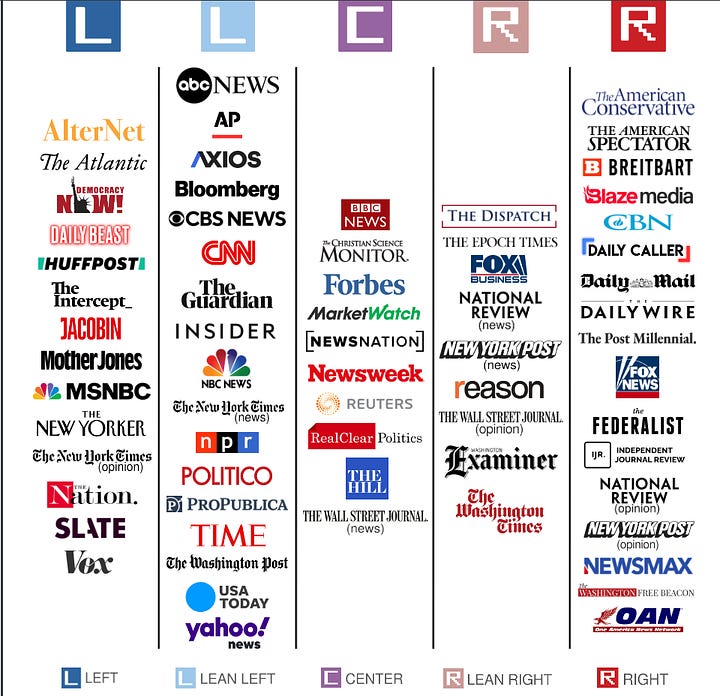
The problem is not that organizations tend to lean one way or another, but rather that they continue to lean into the idea that their way is “nonpartisan,” when evidence clearly shows otherwise.
What if instead of leaning into “nonpartisan,” Kenney asked, we leaned into “multipartisan?”
It was a seminal early discussion on the editorial side that played out in real-time every week on the New Dominion Podcast, where Shaun and myself would interview people from across the political spectrum and, instead of playing crossfire — zinging guests with liberal and conservative talking points and trying to trap them — trying instead to understand each guest’s “why behind the why.”
In other words, our concern was less about analyzing and picking at a guest’s position, and more about listening to better understand what brought our guest to their particular position.
Episode after episode, as Shaun and I spoke with people that one or both of us fundamentally disagreed with, we began to appreciate how distinctive, and useful, it was to learn first about what motivates their beliefs, before moving onto the policy issues that so frequently have become the political flashpoints that have become all but impossible to talk about in the public square.
Now into its second season, NDP’s approach is evolving. Shaun, now working for Attorney General Jason Miyares, is no longer co-hosting. Stepping up have been Executive Producer Cori Blanch and Megan Samples of the George Washington Regional Commission, along with guest co-hosts like Jeh Hicks. Together, we are leaning deeper into the concept of exploring how people construct their ideas and policy positions, as opposed to forcing them to defend them against one line of argument or another.
Podcasting is proving itself a perfect medium for this type of work, because there is real-time back-and-forth discussion that allows for nuance, explanation, and clarification.
But can this be done in print? That question has taken longer to resolve, but we believe the answer is yes.
Thank You, Rev. Davies
Multipartisanship works on the podcast because good conversation has always been multipartisan. Finding a resolution is not necessarily the point of conversation. Rather, the point is to let those in dialog discover why someone believes as they do, even as each person explains what specifically those beliefs are built on. This allows for growth.
In print, however, each story is by a single writer (most often) who is crafting a piece that explains others’ points, sometimes synthesizes those perspectives, and then wraps up by either crafting a resolution, or pointing toward bigger issues.
Some have suggested that what we were describing as “multipartisan” is really just printing dueling opinions — one left, one right — which has been tried (see the opinion page of the Chattanooga Times Free Press) and has only exacerbated our toxic civil square. Pitting left against right on the page, in other words, simply reinforces entrenched ideas, as opposed to opening lines of communication, because the presentation lacks the real-time back-and-forth dynamic of the podcast.
There is a point to be made here. To make the multipartisan ideal work in print, therefore, requires duplicating that deeper real-time give-and-take being perfected at NDP, and avoiding the pitting of left-vs-right that has been tried and failed.
We are hardly the first to wrestle with this problem. Footnoting with hyperlinks to sources, explaining how stories are reported, the “Axios” model: each of these is about trying to get beyond a one-sided story and helping readers understand to intellectually engage in real time with a broader discussion that moves the proverbial ball forward. In so doing, each approach tries to encourage readers to think deeper with those with whom they may disagree.
In spite of these efforts, which are not without their successes, the print story remains by default one-sided. One writer, one voice, is in control of the narrative.
To make multipartisanship work in print, therefore, requires a fundamental change in how the sides are gathered and presented. And that is only done by bringing multiple writers to bear on the problems we face, writing in a way that recognizes the power of various perspectives, celebrates them, and advances new perspectives.
Interestingly, there is a precedent for this — Talmud.
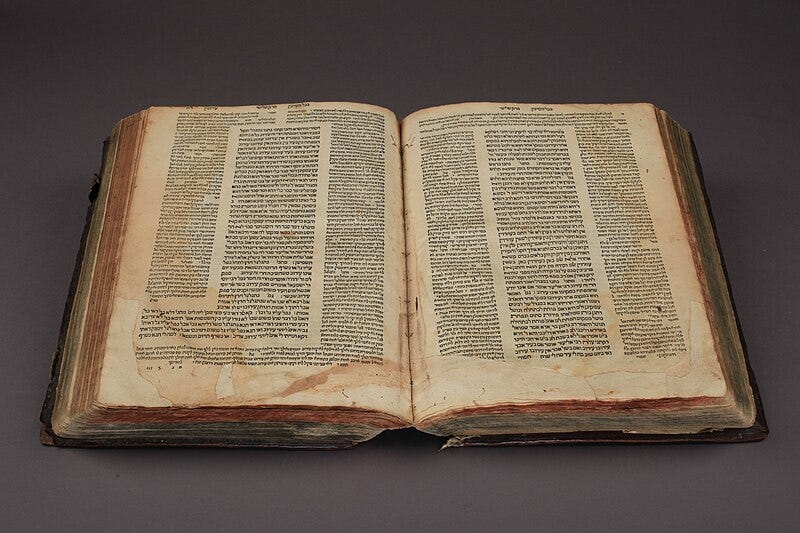
In simple terms, each page of Talmud combines sacred text (in the center of the page) with rabbinic interpretation and commentary (around the body of scripture), bringing to life generations of voices across Jewish history in real time for the reader, granting them access to the rich diversity of thought and dynamic discussion that defines Judaism.
Our first serious attempt to do this in print was in our approach to covering the life and legacy of Fredericksburg’s late Mayor-for-Life, Lawrence A. Davies.
The Advance brought together three very different voices, in three very different journalistic styles, that brought forth the nuances, variety of perspectives, and complex interactions that illuminated who Rev. Davies was.
The first we ran shortly after Davies’ passing was crafted by Adele Uphaus. It was a classic piece of news journalism. Combining copious quotes from those who best knew and worked with Davies, along with biographical information that focused on his leadership in Fredericksburg’s civic and faith communities, it captured the public story that will be shared throughout our community for years to come.
Shortly afterwards, Kenney penned his tribute, an opinion piece grounded in a belief that defines what he himself holds dear — the importance of the common good over the greater good.
“Davies would show,” Kenney wrote, “how the common good could triumph over the factions and grift, bridging the old to the new by using two tried and true tools: a handshake and a smile.”
His goal was not to tell the official story, but a personal one, and call us to honor Davies appropriately as the hero he is.
“Our debt will forever remain his legacy,” Kenney concluded. “May we repay it with both service and interest.”
To this duo, Gaila Sims added a third piece of journalism — an analysis piece — that took a separate tack.
“While Fredericksburg’s ‘Mayor for Life’ has been rightfully honored with numerous testimonials in the weeks since his passing on August 11th,” she began, “his position within the larger history of Black activism has received less focus.
“Davies was one of the earliest in a wave of Black officials elected following the 1965 Voting Rights Act,” she continued, adding names such as Hermanze E. Fauntleroy Jr., Noel Taylor and Governor Wilder.
What has been missed, however, was how “Each of these men were … a product of what came before.”
She then delivered a master class in Black history and activism in the Fredericksburg area. And how the community, as much as the individual, was responsible for the change that Davies helped bring about.
“When Reverend Davies ran for Fredericksburg City Council in 1966,” Sims wrote, “Black community members rallied around him. Mrs. Todd made a block-by-block map of Fredericksburg and found a chairman for each block, organizing poll watchers and transportation (especially important in a community with limited access to cars). The number of Black voters doubled.”
News, Opinion, Analysis — Understanding
What stands out is not just three very different takes on Davies and his legacy, but rather three very different types of journalism used to tell these stories.
Uphaus’ straight-news approach, Kenney’s opinion piece, and Sims’ analysis. Each stands alone just fine, but they function together to provide a deeper reading of arguably the most important figure in the city’s past 100 years.
This is how multipartisan journalism can work on the printed page.
Refining and perfecting this approach to journalism is what defines the Advance and sets us apart. And it has become our North Star for all the work we do.
How to effectively do this on a daily basis will require more work, especially in our editorial planning, but this is precisely what we have in the works.
Because creating a new model for getting the news out isn’t enough. We must also restore the faith that has been lost in journalism itself.
And that means bringing as many voices and perspectives as possible to the table, so that we can begin to learn from, as opposed to argue against, one another.





Local Obituaries
To view local obituaries or to send a note to family and loved ones, please visit our website at the link that follows.

Support Award-winning, Locally Focused Journalism

The FXBG Advance cuts through the talking points to deliver both incisive and informative news about the issues, people, and organizations that daily affect your life. And we do it in a multi-partisan format that has no equal in this region. Over the past month, our reporting was:
$8 a month supports great journalism
- First to report on a Spotsylvania School teacher arrested for bringing drugs onto campus.
- First to report on new facility fees leveled by MWHC on patient bills.
- First to detail controversial traffic numbers submitted by Stafford staff on the Buc-ee’s project
- Provided extensive coverage of the cellphone bans that are sweeping local school districts.
- And so much more, like Clay Jones, Drew Gallagher, Hank Silverberg, and more.
For just $8 a month, you can help support top-flight journalism that puts people over policies.
Your contributions 100% support our journalists.
Help us as we continue to grow!
Support FXBG Advance for $8 a month

